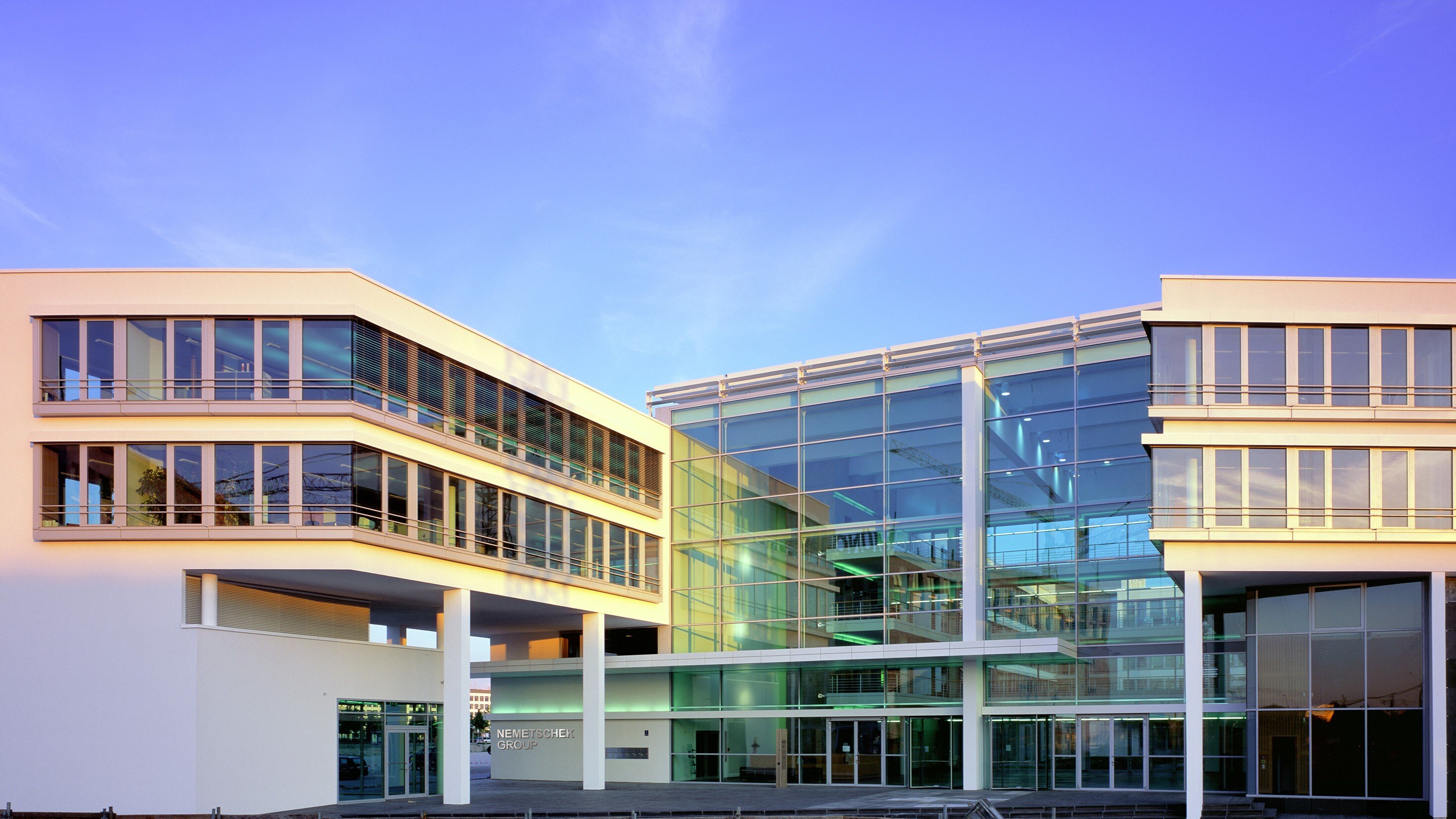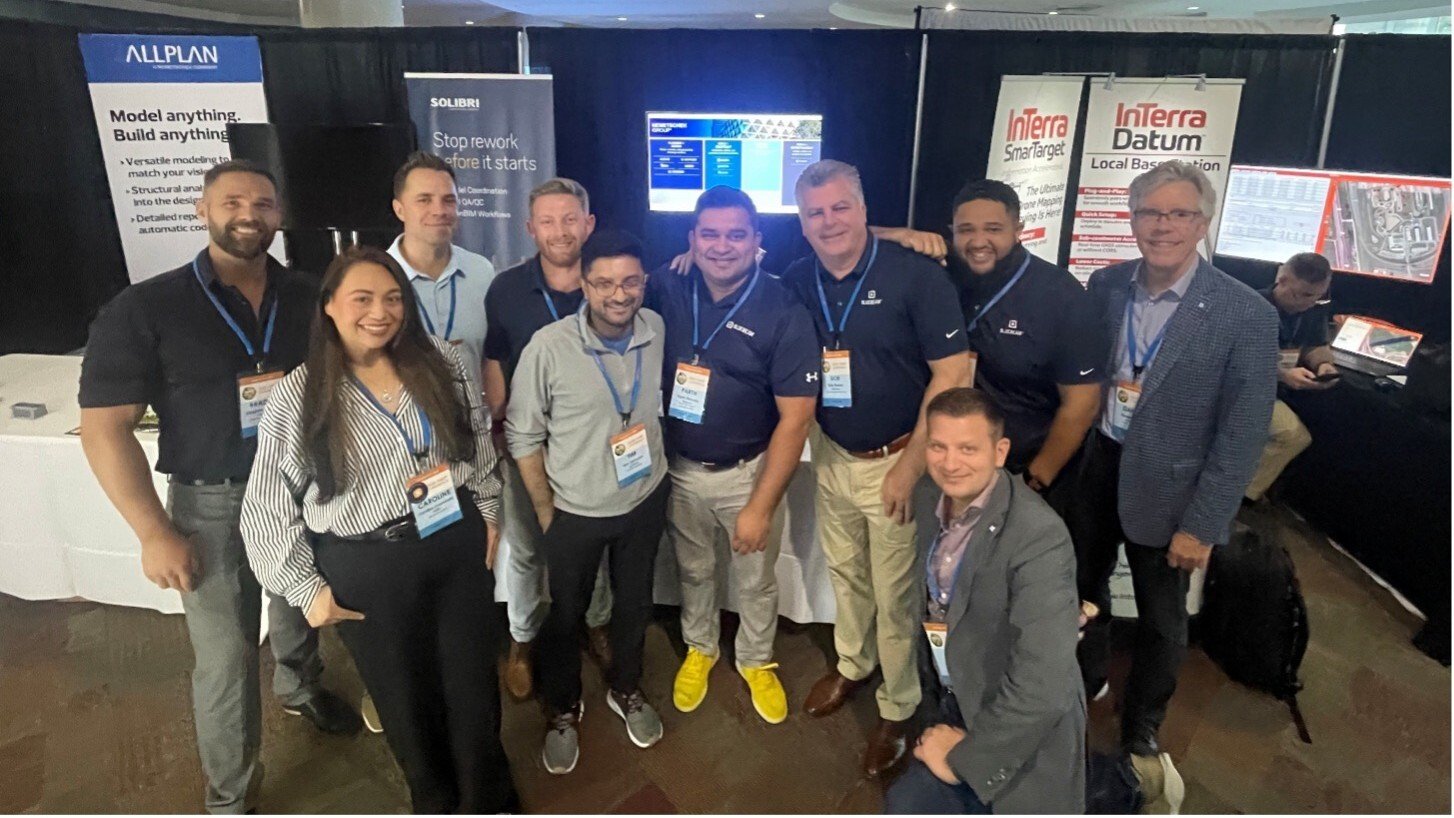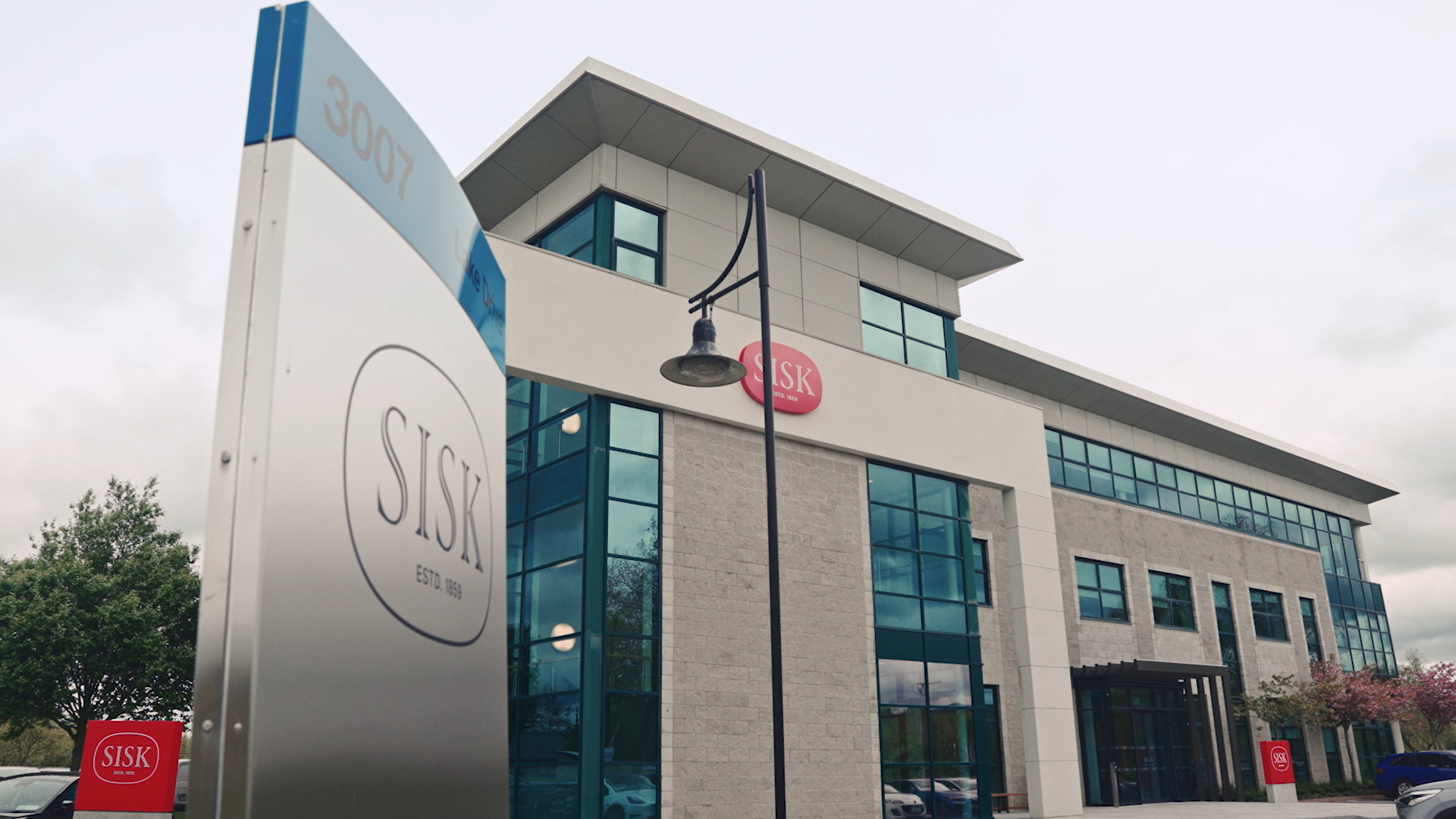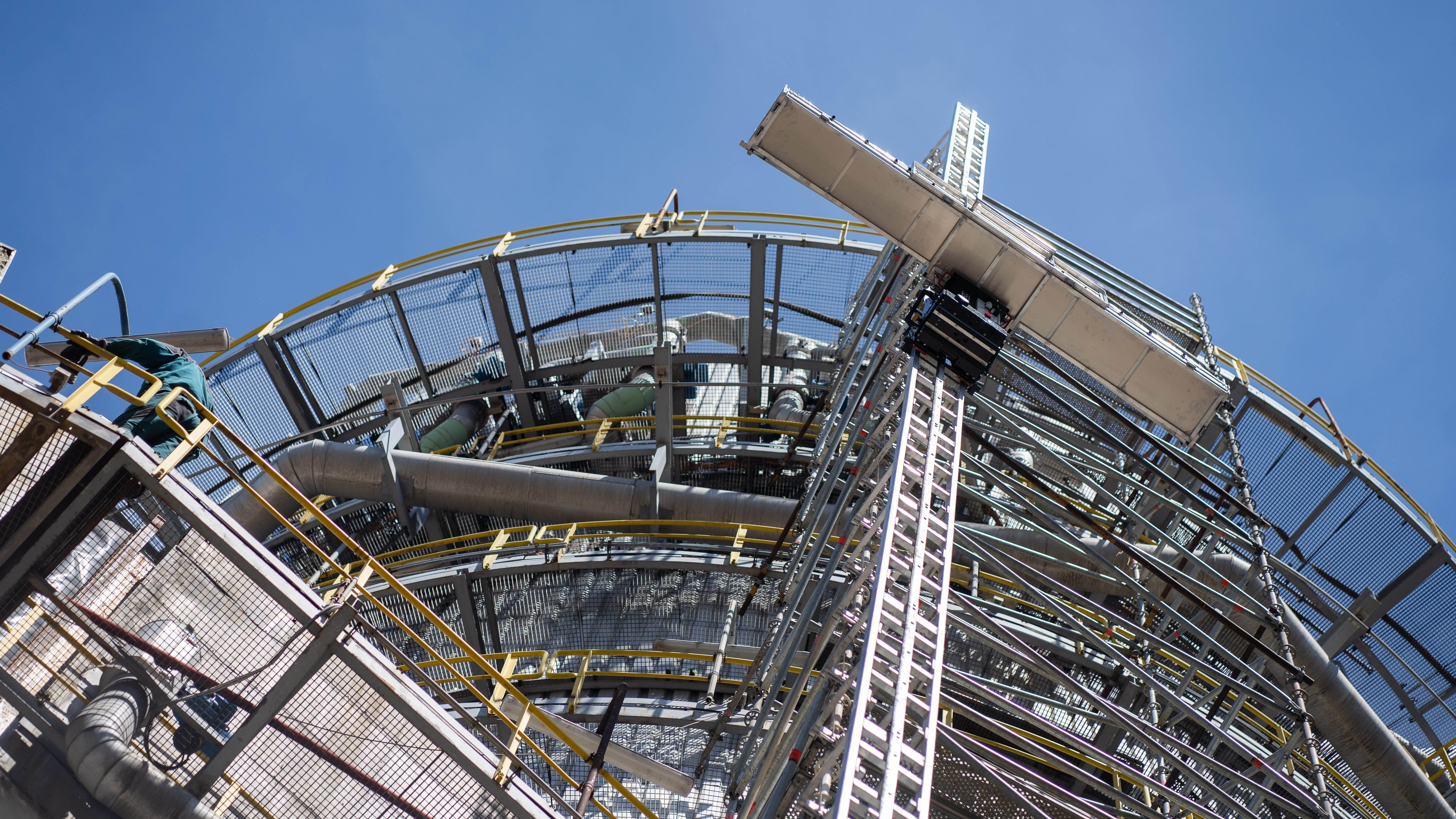How the Nemetschek Haus was given a digital twin
Creating digital twins of buildings requires a robust database, often fragmented for existing structures. To address this, we at Nemetschek developed dTwin, a cloud-based SaaS platform for Building Lifecycle Intelligence, and successfully tested it at our own headquarters.
Author
Martin Guggenberger
Head of Operations Digital Twin
This article belongs to the collection Digital Twin.
To the topic pageIn order to create digital twins of buildings, it is important to factor in the database; in fact, the database is crucial. Whilst they are often up to date for new construction projects, a heterogeneous data landscape is the typical basis for existing buildings. In those cases, the data required often lies dormant in numerous silos, if there are any at all. Naturally, this makes it much more difficult to create a digital twin of a long-established building. To bring the benefits of digital twins to more buildings, Nemetschek developed dTwin, a cloud-based SaaS platform for Building Lifecycle Intelligence - and it has tested it directly at its own company headquarters.
The Nemetschek Haus in Munich was built in 2000 and is home not only to the Nemetschek Group and several of its brands, but also to external tenants. The office building covers more than 30,000 square metres and has undergone several renovations and conversions in recent years. It is therefore a complex landscape, and one that needed to be brought down to a ‘digital’ denominator by means of a digital twin.
In search of the data
The basis for digital twins is building data. In new buildings, this data is collected in a BIM model. For existing buildings, especially older ones, there is usually no standardised or complete source. Information is often available from a range of different sources, including sketches, 2D drawings, 3D or BIM models, images and sensors. Unfortunately, this heterogeneous data situation is not uncommon in the construction industry and, long term, it leads to problems. Those result in a lack of transparency and regularly results in flawed decision-making, high costs and operational inefficiency. A standardised and up-to-date data basis is therefore particularly important.
For Nemetschek, those challenges were a decisive factor in the development of dTwin. The platform acts as a single source of truth and provides contextualised insights across the entire building life cycle. This enables better, data-based decisions to be made; not just in day-to-day operations, but also for future conversions and changes.
Open interfaces in the SaaS platform enable CAD/BIM, CAFM/IWMS and real-time data from IoT sensors and building automation to be imported, providing access to comprehensive information about a building. In the case of the Nemetschek building, those responsible for the project imported corresponding BIM models from renovations - as well as sketches and building plans from conversions - into the digital twin. In addition, together with dTwin partner BIMm Services, a terrestrial laser scanner and mobile scanners were used to take panoramic images of the building. Interestingly, smartphones or tablets can also be used as mobile scanners to capture panoramic images.
A total of 13,000 images of the building and around 100 gigabytes of point cloud data were created, which are now available as a feed for the digital twin. This data was compared with the historical sources in order to obtain an up-to-date, accessible 3D replica of the Nemetschek building.
The digital twin in action
Of course, the platform has been designed to meet the needs of building operators. Building managers can place and assign points of interest and sources of real-time data in the digital twin. The platform also has an intuitive user interface that not only enables users to switch between the 3D point cloud, 360-degree panorama or current BIM model, but also enables them to visually overlay the various sources.
However, the platform is not just a tool for visualising the building. It also provides real-time data for each room by analysing parameters such as temperature, humidity or CO₂ content, thus providing valuable insights into building use. A tabular object library of all assets can also be created. Users can easily filter, search and export these assets. A heat map simplifies the identification and localisation of faulty assets. Those responsible for optimising the space don't even have to be on site to do this. They can set up personalised notifications by email or text message via the platform. Nor do the insights end with the outer walls. Thanks to 3D geodata from Google, the Nemetschek building is embedded in the urban environment.
A virtual bridge between planning, construction and operation
dTwin builds a bridge between the planning, construction and operation of a building and offers all parties involved end-to-end transparency. The interfaces to various AEC/O solutions make dTwin a single source of truth: all relevant data is centralised in a clearly structured platform, thus ensuring the interoperability of different systems.
During the planning phase, all parties involved benefit from a common source of information. During the construction phase, all new information is fed back into the platform so that the progress of the building can be tracked. And at the end of the construction phase, building operators receive a complete model with all relevant information for operation.
This digital building twin not only increases efficiency during building operation, but also provides the planning basis for future refurbishments or conversions. The digital twin thus becomes an objective basis for decision-making - both in existing properties and in new buildings.





